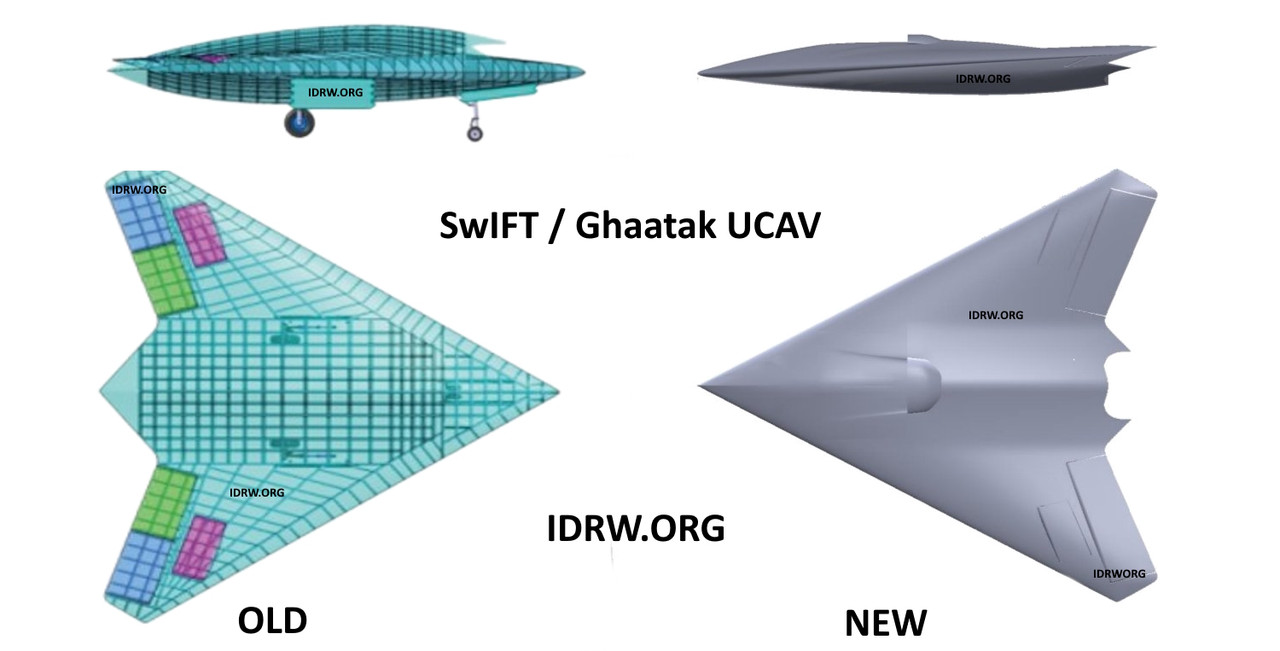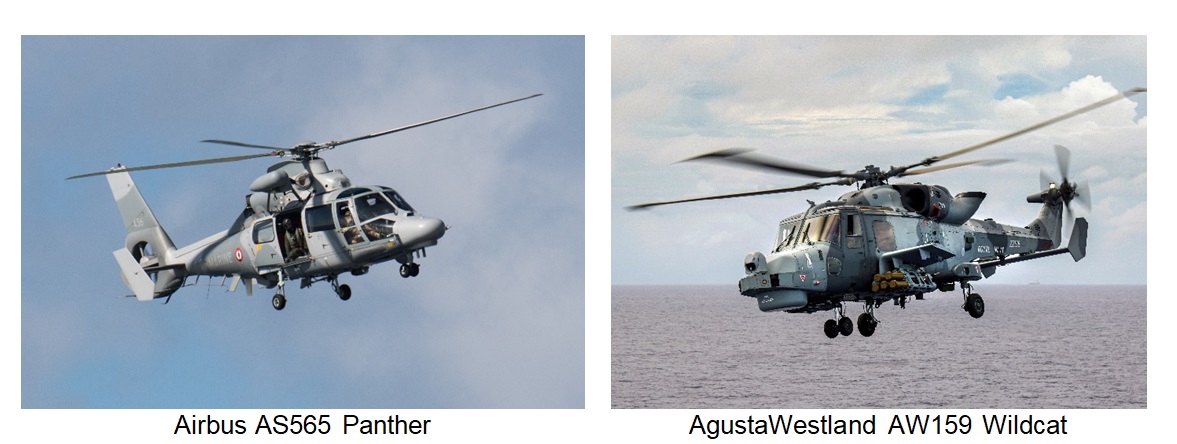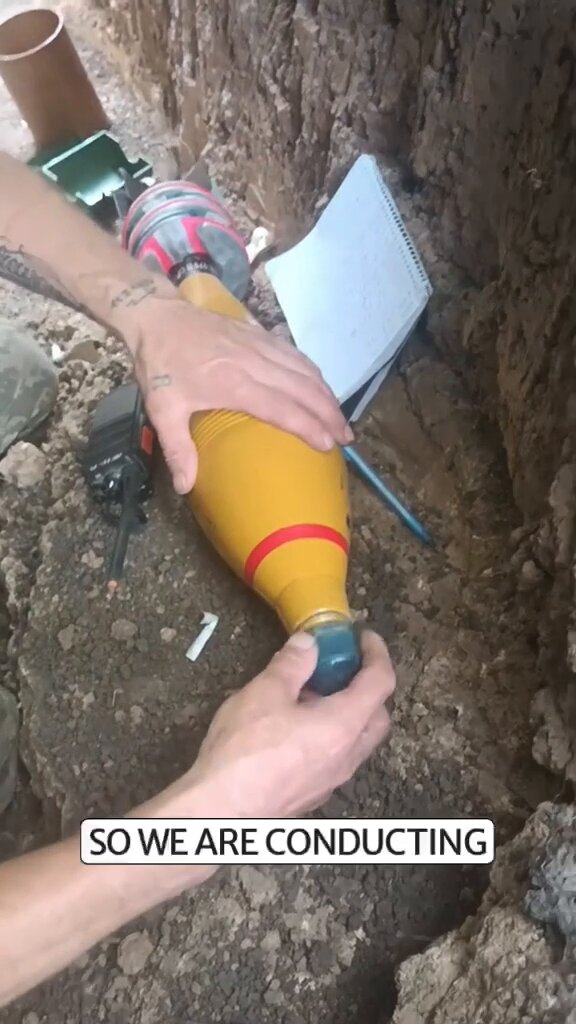SOURCE: RAUNAK KUNDE / NEWS BEAT / IDRW.ORG


The Indian Air Force’s (IAF) ambitious plan to acquire 114 new fighter jets through the Multi-Role Fighter Aircraft (MRFA) program faces a significant hurdle: global supply chain disruptions. This critical issue is impacting the production rates of existing fighter jets and affecting the availability of engines that power them.
International aerospace companies are grappling with a shortage of special alloys, a key component in fighter jet manufacturing. This shortage has led to production slowdowns for current fighter jet programs, potentially impacting timelines for the MRFA tender.
Continue readingSOURCE: RAUNAK KUNDE / NEWS BEAT / IDRW.ORG


The Indian Air Force (IAF) has given the green light to a proposal by the Defence Research and Development Organisation’s (DRDO) Aeronautical Development Establishment (ADE) to transform its SWIFT UAV technology demonstrator into a full-fledged mini-UCAV bomber program.
Originally conceived as a 1-ton technology demonstrator for the larger Ghatak UCAV, the SWIFT UAV has rapidly evolved due to the increasing significance of unmanned aerial vehicles (UAVs) in modern warfare. The ADE’s proposal to convert it into a mini-UCAV bomber is a strategic move to bolster India’s aerial capabilities.
Continue readingSOURCE: RAUNAK KUNDE / NEWS BEAT / IDRW.ORG


A French Air Force Rafale fighter jet that encountered technical difficulties during the recent Tarang Shakti exercise in Tamil Nadu was rapidly returned to service thanks to the robust cooperation between India and France.
The unexpected repair was made possible through the Mutual Logistics Support Agreement (MLSA) signed by the two countries. This strategic partnership allows for the sharing of logistics and services between the armed forces of both nations.
Continue readingSOURCE: DINESH BEHARA / FOR MY TAKE / IDRW.ORG


In 2017 Indian Navy issued an RFI for 111 Naval Utility Helicopters (NUH) to replace ageing license-built Alouette III /Chetak helicopters. The RFI stipulated that the helicopter should be in the category of 5 tons and should be able to carry out operations such as Search and Rescue (SAR), Medical Evacuation (MEDEVAC), Communication Duties, Anti-Piracy and Anti-terrorism, Humanitarian Assistance, and Disaster Relief (HADR) and Surveillance and Targeting in both day and night. [1]
The Navy was looking for a utility helicopter with limited sub-surface targeting carrying at least one torpedo and capable of undertaking the operations both from ships and shores.[1]
Continue readingSOURCE: IDRW.ORG TEAM

The Indian Air Force (IAF) is looking to significantly bolster the capabilities of its MiG-29 fighter jets by equipping them with stand-off ground attack weapons. A recent Request for Proposal (RFP) issued by the Ministry of Defence, on behalf of the IAF, invites industry partners to collaborate on this project, which will be overseen by the IAF’s No.11 Base Repair Depot.
The IAF has identified an urgent need to upgrade 24 MiG-29 aircraft to carry the High Speed Low Drag (HSLD) Mark-II stand-off weapon, capable of striking targets at a distance of over 180 kilometers. This enhancement requires substantial modifications to the aircraft, including the integration of new hardware and software systems.
Continue readingSOURCE: IDRW.ORG TEAM


VayDyn, a startup incubated at the IISc-supported AI and Robotics Technology Park (ARTPark), has unveiled its groundbreaking Vyom Nano-Drone. This compact marvel of engineering boasts impressive capabilities, making it a versatile tool for a range of applications.
With a focus on smart autonomy, the Vyom Nano-Drone stands out with its fully autonomous flight capabilities. Its pocket-sized design ensures easy portability, allowing users to deploy it effortlessly in various environments. Equipped with low-latency digital FPV video telemetry, operators can enjoy real-time, high-quality video feeds, enhancing situational awareness.
Continue readingSOURCE: RAUNAK KUNDE / NEWS BEAT / IDRW.ORG


The Indian Air Force’s Sukhoi-30MKI, a formidable asset, is set to undergo a transformative upgrade, dubbed the “Super Sukhoi”. This ambitious project, which has been in the works for over a decade, aims to elevate the aircraft’s capabilities to rival and surpass its Chinese counterpart, the J-16.
Initially envisioned as a beneficiary of the now-defunct Fifth Generation Fighter Aircraft (FGFA) program with Russia, the Super Sukhoi’s development trajectory shifted when India opted out. Russia subsequently proposed the Su-30SM upgrade, featuring the potent AL-41F engine. However, India has charted its course, prioritizing indigenous technology.
Continue readingSOURCE: RAUNAK KUNDE / NEWS BEAT / IDRW.ORG

In a significant stride towards enhancing the survivability of its armoured forces, the Defence Research and Development Organisation (DRDO) is actively developing an advanced active armour system. This breakthrough technology aims to replace the traditional passive steel plates on tanks and armoured personnel carriers with a more dynamic defensive shield.
India’s Armoured fleet, comprising over 3,500 tanks including Indigenous Arjun and Russian-origin T-72 and T-90, is set to benefit from this cutting-edge development. The core concept revolves around equipping these vehicles with sensors capable of detecting incoming anti-tank missiles, whether launched from the air or ground. Once a threat is identified, the system will autonomously deploy countermeasures to neutralize the rocket.
Continue readingSOURCE: RAUNAK KUNDE / NEWS BEAT / IDRW.ORG


The Indian Air Force (IAF) is seeking assistance from Boeing to determine the financial viability of repairing an Apache attack helicopter that made a hard landing in Ladakh earlier this year. The incident, which occurred at a high altitude of 12,000 feet in snow-bound terrain, resulted in significant damage to the aircraft.
The Apache reportedly lost power during its operational sortie, forcing the pilots to perform an emergency landing. The harsh conditions and rocky terrain caused extensive damage to the helicopter’s undercarriage. Recovering the aircraft from the remote valley took weeks for the IAF.
Continue readingSOURCE: IDRW.ORG TEAM


Bengaluru-based Opendrone Private Limited, operating under the brand name Airbound, has introduced a groundbreaking drone design aimed at revolutionizing rural healthcare delivery. The company’s new Blended Wing Body Tailsitter drone embodies a development philosophy focused on making a deep impact on real lives by addressing the critical issue of healthcare accessibility in remote areas.
Airbound’s innovative drone network is designed to operate without the need for traditional infrastructure, making it ideally suited for remote and underserved regions. The vertical takeoff and landing (VTOL) technology facilitates rapid delivery of medical supplies, such as blood, enabling hospitals to extend their reach and potentially transform the landscape of healthcare delivery. The drone takes off like a rocket and flies like a plane, combining the best of both worlds for efficient and effective service.
Continue readingSOURCE: IDRW.ORG TEAM


A recent video emerging from Ukraine has sparked a flurry of discussions around India’s possible involvement in supplying ammunition to the war-torn nation. The video reportedly shows Ukrainian gunners preparing a 120mm mortar shell manufactured by Munitions India Limited (MIL), a state-owned defense enterprise.
While India has maintained a neutral stance on the Russia-Ukraine conflict, avoiding direct arms supplies, this discovery suggests a potential indirect route. Sources close to idrw.org claim that these shells were initially supplied to the Czech Republic. Interestingly, Czech Prime Minister Petr Fiala previously announced the arrival of artillery ammunition in Ukraine, with the first batch reportedly comprising 180,000 shells. Subsequent deliveries are expected to consist of batches between 50,000-100,000 pieces per month, according to Defense Express.
Continue readingSOURCE: RAUNAK KUNDE / NEWS BEAT / IDRW.ORG


General Electric’s Power Conversion business has proposed its Integrated Full Electric Propulsion (IFEP) system for the Indian Navy’s upcoming aircraft carrier. This advanced propulsion system promises enhanced efficiency, survivability, and cost-effectiveness compared to traditional propulsion methods.
GE’s IFEP system employs a dual electric motor configuration for each drive train, paired with VDM25000 power converters equipped with three independent channels.
Continue readingSOURCE: RAUNAK KUNDE / NEWS BEAT / IDRW.ORG


In a significant boost to India’s defence manufacturing capabilities, the French Naval Group, the partner in the Scorpene submarine project, has announced that the combat management system (CMS) for the upcoming three Scorpene submarines will be indigenously developed by Bharat Electronics Limited (BEL). While the core technology will be based on French architecture, the actual system will be designed and built in India.
This development marks a pivotal moment in India’s journey towards self-reliance in defence. The CMS is the brain of a submarine, integrating various sensors, weapons, and systems. Until now, India has been dependent on foreign original equipment manufacturers (OEMs) for this critical component. The indigenous development of the CMS will not only reduce dependency but also create high-skilled jobs in the country.
Continue readingSOURCE: RAUNAK KUNDE / NEWS BEAT / IDRW.ORG


The Ministry of Defence, Government of India, has announced its intent to procure the Carrier Air Defence Tracked (CADET) system to meet the Indian Army’s growing needs for air defence in support of mechanized platforms across various units. This procurement is aimed at addressing the Army Air Defence’s requirement for a common tracked platform that can serve as a versatile carrier for both current and future equipment.
The CADET platform is envisioned as a common, box-shaped tracked chassis with a raised structure designed to accommodate crew and equipment inside, as well as provide attachment points on its exterior for mounting various air defence systems. This design will ensure uniformity across Air Defence units, improving equipment management and streamlining training processes.
Continue readingSOURCE: IDRW.ORG TEAM


The Indian Army’s Aviation Corps is eagerly awaiting the delivery of its first batch of Apache AH-64E attack helicopters from the United States. Originally slated to arrive between May and June, the six helicopters, procured as part of a $600 million deal signed in 2020, are yet to touch down on Indian soil.
Sources within the Defence Ministry attribute this delay to technical issues encountered by the US side. Consequently, there is still no definitive timeline for the arrival of the first batch of three helicopters.
Continue reading